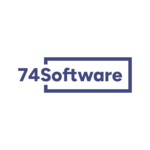Instant payments momentum gathers pace globally as Swift strengthens its role
Instant payments are set to be one of this year’s hot topics at Sibos. Last week, Swift and EBA Clearing announced that users of EBA’s instant payments system, RT1, will be able to access the platform via SwiftNet Instant, Swift’s instant payments messaging solution, from November 2018. Elsewhere, Australian consumers have been told they will be able to make instant payments from January next year.
Together with 39 funding institutions, EBA Clearing has been developing and implementing RT1 since April 2016. A pan-European infrastructure platform, it will be used for the 24×7 settlement of real-time payments in line with the SEPA Instant Credit Transfer (SCT Inst) scheme developed by the European Payments Council (EPC). The objective was to provide payment service providers across the single euro payments area (SEPA) with a real-time payment processing facility.
Erwin Kulk, head of service development and management at EBA Clearing, says RT1 will provide the European payments industry with a pan-European infrastructure platform for real-time payments in euro from day one of SCT Inst. “We expect to see close to 30 joiners for the go-live on 21 November 2017 and more than 50 users in the system by mid-2018,” he says. The accessibility via Swift’s solution will provide this user community with additional choice in connectivity, he adds.
SwiftNet Instant is designed to work anywhere in Europe and around the world, enabling Swift members to connect seamlessly to multiple instant payment clearing and settlement mechanisms. For Sepa, Swift will offer connectivity not only to RT1, but also to the Eurosystem’s Target Instant Payment Settlement (Tips) platform. Swift is supporting the Eurosystem’s aim to create a single gateway into its market infrastructure services and access to other clearing and settlement mechanisms.
Alain Raes, chief executive of Europe, Middle East and Africa at Swift, says: “Europe is taking important steps to ensure its lead in the instant payments area and we are pleased to be able to connect our customers to such critical infrastructures. Our solution is future-proofed to meet the current and future messaging needs of our customers in Europe and those in the rest of the world.”
The solution for European customers is the next step in Swift’s global instant payments strategy, which began in 2015 when the co-operative was awarded the contract to build the messaging infrastructure to underpin Australia’s New Payments Platform (NPP). Earlier this month, the 13 local banks that set up the NPP announced that faster payments would start around the end of January. It is expected that four out of every five bank accounts will be eligible for faster payments, with some accounts held at international and smaller banks to qualify later.
In August, Swift announced that it will provide US financial institutions with a gateway to The Clearing House’s (TCH’s) real-time payments platform. TCH’s platform is a new clearing and settlement system to support domestic instant payments in the US. It will enable consumers and businesses to send and receive payments in real time and directly from their accounts at financial institutions. It will also include data and non-payment messages that financial institutions can use to build digital commerce solutions. “Given its reach and expertise in payments, Swift is a great collaborator as we bring a wide-scale real-time payments system to the US market,” says Steve Ledford, senior vice-president product and strategy at TCH. “Achieving our vision of broad adoption of real-time payments will only be possible when the majority of US institutions are able to participate, and Swift will be instrumental in helping us meet this goal.”
Swift is providing a similar solution to participants in Hong Kong’s Faster Payments System.
RT1 will be open to any account-servicing payment provider adhering to the SCT Inst scheme. The platform is network-agnostic, meaning that users can rely on different network solutions, provided they have been introduced at platform and user level in line with the necessary security requirements.
The industry’s move to instant payments and the European single market infrastructure gateway will require significant infrastructure and operational change, says Swift. Carlo Palmers, head of market infrastructures, Swift, says: “We will make instant payments simple and seamless for our customers, who will be able to reuse the investment they have made already. For new customers, we will offer complete on-boarding services to reduce risk and manage costs.”
The recent World Payments Report 2017, published by Capgemini and BNP Paribas, predicts instant payments (along with open application programming interfaces, blockchain and mobile wallets) would become the leading technological advancements in the payments industry. “These technologies will drive payments innovations in areas including networking with different stakeholders, accelerating the immediacy of payments, and ensuring security of transactions,” states the report.
Mike Steinharter, chief commercial officer at global payment network operator Earthport, says with populations growing, markets becoming ever more global and business increasingly complex, the need for a faster payments routine has never been more crucial, needed or appreciated. “The introduction of real-time payments is inevitable and is being driven, in part, by client demand for speed and convenience. Consumers have been given a taste of the real-time experience through point of sale debit and credit card transactions, as well as e-commerce purchases – and now businesses are asking for the same swift service.”
One of the main challenges for real-time cross-border payments is the multitude of systems currently deployed, he adds. “The success of an instant cross-border payment event relies on these various systems being fully automated, as a minimum requirement and, preferably, synchronised with each other.” The overall performance of any real-time payment process – which should involve data transfer, screening, validation, authorisation, posting, clearing, settlement and notification – is driven by the sequencing, pace and effectiveness of the slowest links in the chain.
There are also regulatory hurdles to overcome with real-time cross-border payments. “The faster the payment, the less time there is to screen a transaction and many financial institutions are nervous about issues such as anti-money laundering (AML). At the moment, instant payments are, in some cases, restricted to domestic payments, which do not require the same degree of vigilance as international payments. Multi-bank collaboration, however, can go some way towards ensuring the upper hand against criminal activity.”
One of the consequences of the open account access provided by the reviewed Payment Services Directive (PSD2) in Europe is that real-time payments may be offered by alternative providers, potentially bypassing banks, says Steinharter. In fact, innovative technologies and shortened processes well suited to faster, more transparent and more cost-efficient payments are being developed by new providers such as fintechs. “Technology will provide one of the key drivers for the growth of real-time payments. There are numerous schemes in progress and some countries have already pursued a path of real-time for domestic payments – including, for example, the UK, US, Europe, Singapore, Denmark and Australia. Some banks and payment service providers are thinking of completely redesigning the landscape by adopting distributed ledger technology or blockchain-type technologies.”
In tomorrow’s (17 October 2017) Daily News at Sibos – Day 2, we will publish the views of leading payments bankers on where they think instant payments are headed.
This article is also featured in the Daily News at Sibos 2017 – Day 1 edition.
Click here to read the issue online or pick up a print copy if you are at the conference!
The digital and print editions are free.













































